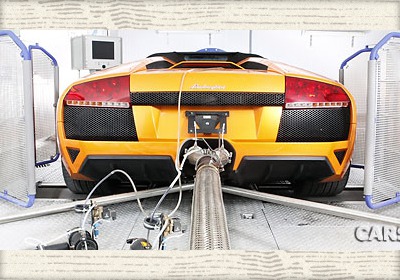Lamborghini CO2 reduction Press Release
Sun, 07 Jun 2009Lamborghini CO2 Reduction Press Release
• The construction of a large photovoltaic plant, combined with an energy-saving project, will achieve a 30% reduction in the factory’s CO2 emissions by 2010
• Modifications to vehicles will result in a 35% reduction in CO2 emissions by 2015
Automobili Lamborghini announces its intention to complete its program of environmental sustainability in record time by presenting new plans which will enable the company:
The plans for reducing emissions will thus involve two areas: modifications to the Lamborghini factory in Sant’Agata Bolognese, and development in vehicle design.
To redefine its industrial processes in accordance with its policy of environmental sustainability, Lamborghini has just begun a project to complete installation of a large photovoltaic system by the end of 2009.
The roof-top plant will produce 1,582 Megawatt hour (MWh) of “green” energy per year, which translates into a 20% reduction in CO2 emissions (-1,067,820 Kg/year) by 2010.
The photovoltaic systems will have a total installed power rating of 1,4 Megawatts and will extend over 17,000 m2 throughout the entire industrial area. The new system will be built by Sinergia Sistemi S.p.A.
At the same time, an equally important energy conservation project involving insulating the production facility’s whole roof, improving lighting and heating and introducing destratification systems for heated air will be completed, thus resulting in a 10% energy usage reduction by 2010.
In April 2009 Lamborghini obtained the UNI EN ISO 14001 certificate, meeting the international environmental standards. It is also the first firm in the Italian automotive sector to be close to registering for the EMAS environment certificate, having successfully completed the program: EMAS regulations are set by the European Union to support organisations in their effort to evaluate and improve their own environmental efficiency.
These recent achievements support Lamborghini’s commitment to protecting the environment in which it operates, and its desire to make all stakeholders aware of its actions in a transparent manner.
With regard to Lamborghini vehicles, the CO2 reduction plan aims for an additional 35% decrease in emissions by the year 2015.
The program reached its first milestone with the Gallardo LP 560-4. Introduced last year, the new car’s technical advancements resulted in an 18% reduction in CO2 emissions.
At this point, Research & Development activities will continue in the following directions:
Lamborghini’s commitment and its sense of social responsibility regarding the environment is evidenced by the numbers and by the sheer size of the investments that are planned. 35 million Euros will be appropriated over the next five years for this purpose.
Stephan Winkelmann, the President and CEO of Lamborghini, has said, “Despite the difficult situation in today’s global economy, Lamborghini is committed to its policy of environmental management, since we are well aware of the great opportunities that derive from it. We have an objective to reduce CO2 emissions to the greatest possible degree. We have also set compulsory annual goals that are part of an integrated approach both considering the automobile as an element which is more considerate of the environment, in terms of emissions and the use of resources, to the accomplishment of a series of corresponding measures such as modifications to our factory. This is an important action for Lamborghini and a central opportunity for our long term corporate and product development.”
Located in Casalecchio di Reno, Sinergia Sistemi S.p.A. is a leader on the Italian market of services that help companies save energy. The company specializes in energy certification of buildings and the construction of large systems that take advantage of renewable energy sources. Sinergia Sistemi also acts as an E.S.Co. (Energy Service Company) that finances the plant systems and energy requalification projects it offers to its customers, in a relationship of total Energy Management.
The finalized project was built from a design based on a preliminary study carried out by the CENER National Center for Renewable Forms of Energy of Spain. This study involved a broad evaluation of the feasibility and size of the project.
By Cars UK

